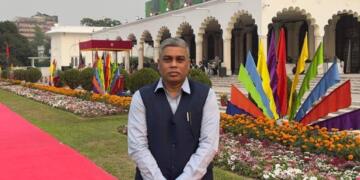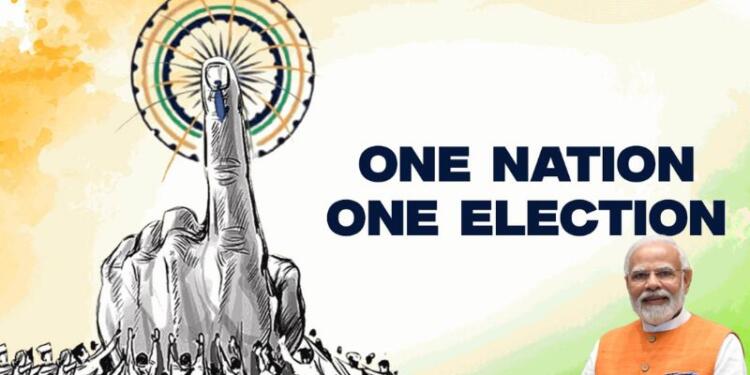The policy of “One nation, One election” (ONOE/ONOP) has been a hot issue in the Indian political arena since the coming of the incumbent Modi government, and it picked a new pace after the BJP’s poll manifesto was released before the 2024 Lok Sabha Elections. Now, after tabling the One Nation, One Election (ONOP/ONOE) Bill in the Lok Sabha, the Union Law Minister Arjun Ram Meghwal proposed that the bill be sent to the Joint Parliamentary Committee. The bill is all set to be send to the JPC.
‘One Nation, One Election’ bill to be sent to JPC as electronic voting records 220 Ayes and 149 Noes. #OneNationOneElection #ONOP #ONOE #LokSabha #Parliament pic.twitter.com/T58O0I1zMI
— News9 (@News9Tweets) December 17, 2024
The Bill earlier received Cabinet nod nearly three months after the Union Cabinet accepted the recommendations of the high-level committee headed by Former President Ram Nath Kovind on conducting simultaneous polls.
As per earlier media reports, two Bills were slated to be introduced in the ongoing Parliament session, and it has now been tabled in Lok Sabha on Tuesday, but the ONOP legislation has been sent to the Joint Parliamentary Committee (JPC) for wider discussions.
How the Electoral Reset would Revolutionize Indian Democracy
The policy for conducting ONOE/ONOP is widely discussed and debated in terms of its effect, repercussions, and benefits among politicians, policy analysts, and scholars, which has brought several interpretations and possible outcomes in political and policy spheres.
The small, medium and large opposition political parties, including regional and central political parties, have opposed it, fearing the favourable outcomes for the ruling party at the centre. The article will look into it from multiple angles and try to provide an overall understanding of the proposed policies on Indian resources and people.
Before moving forward, the article will mention a recent economic report released on November 29th, revealing a significant deviation from India’s projected economic growth. The report indicates a 1.1 percentage point shortfall, with Q2 FY2024 growth reaching only 5.4 percent, falling short of the anticipated 6.5 percent target. Economic analysts have identified two primary factors contributing to this growth slowdown. The most notable cause is the substantially reduced government spending.
Against a targeted expenditure of 132 billion dollars, the government managed to spend merely 37 percent during the first half of the fiscal year. This limited spending has precipitated substantial consequences, particularly in job creation, and negatively impacted middle-class household expenditures. An immediate question emerges: Why did government spending fall substantially below the promised levels? The answer lies in the recent consecutive election cycles.
The Lok Sabha elections, concluding in early June, were swiftly followed by state elections in three states, which concluded in November. During electoral periods, the Model Code of Conduct (MCC) restricts governments from initiating significant projects, as such actions could potentially be perceived as voter influencing tactics.
Consequently, governments are compelled to either expedite project launches before election announcements or defer them until after electoral processes conclude.
This scenario illustrates how frequent elections create substantial administrative constraints, compelling governments to pause or delay critical developmental initiatives.
The case underscores a crucial observation: Multiple, fragmented elections not only consume extensive human and economic resources but simultaneously impede the country’s economic momentum and growth trajectory.
The other positive implications of the ONOP/ONOE are cost reductions, governance continuity, and stability in policies. It can also enhance voters’ participation and reduce political and social polarization in people’s personal, political, and social lives. Let’s see all these one by one.
Implementing simultaneous elections for national and state legislatures would significantly reduce the enormous financial burden currently associated with frequent elections.
The Election Commission, political parties, and candidates spend massive resources on multiple election cycles. For example, the 2024 national election in India cost approximately Rs 1,00,000 crore, which is a huge amount. The synchronizing elections and holding all elections of state and centre could save billions of rupees that could be redirected to developmental activities.
Also Read: Batenge Toh Katenge Is Not Limited To Caste Only
The second benefit is providing continuous governance. The frequent electoral processes disrupt administrative functioning, with government machinery getting preoccupied with election preparations and implementation. By conducting elections simultaneously, there would be less administrative disruption, allowing governments to focus more consistently on policy implementation, developmental projects, and long-term planning without repeated electoral interruptions.
The third and most important one is stability in policy making. It could potentially create more stable political environments, reducing the time spent in election mode and allowing elected representatives to concentrate on governance.
Hence, ONOP could lead to more consistent policy-making, better long-term strategic planning, and reduced political uncertainty that often accompanies multiple, scattered election cycles.
In the era of globalization, people have migrated to different states and countries for better opportunities, and they feel lazy coming again and again to cast votes, understanding their costs and time. Consolidating elections might increase voter turnout and engagement, as citizens would need to vote only once for multiple levels of government. This could simplify the voting process, reduce voter fatigue, and potentially improve overall democratic participation by making the electoral process more convenient and streamlined.
India has seen polarization on different levels, such as political parties, ideologies and religions, during election periods in recent decades. Frequent elections tend to create continuous political tensions and heightened rhetoric. The recent elections in three states, Haryana, Maharashtra, and Jharkhand, have orchestrated the polarization of voters according to the above-mentioned parameters.
By reducing the frequency of electoral contests, ONOP might help moderate political discourse, allowing more time for constructive dialogue, bipartisan cooperation, and focus on substantive policy discussions rather than perpetual campaign mode. Hence, it may create a harmonious and light environment among the citizens of India in their personal, political and social life.
Considering all the possible positive outcomes, the Union Cabinet’s reported nod to the ONOP bill is a major step in the direction of a structural reform that could also give a major philip in economic growth and good governance.
Going by the reports, the BJP-led NDA government has pulled the rug under the feets of the opposition by sending it to the JPC. Previously, the I.N.D.I. Alliance parties had based their opposition on the excuse that the government didn’t seek wider discussions, that they were pushed hurriedly without sending it to the JPC or that the bills were bulldozed, all in the name of cynical opposition to the bills, moves taken by the Modi government.
The opposition parties will not be bound to participate in the debate and put their point of view in favour or against the proposed policies by upholding the constitutional and democratic values, which opposition party leaders always claim to demonstrate in their hands through the book of the constitution and in their rhetoric by saying “Samvidhan Bachana hai” or “Save Constitution”.
Otherwise, the himalayan gap in their words and actions will be exposed, which may further degrade the trust of Indian citizens in the opposition parties.































